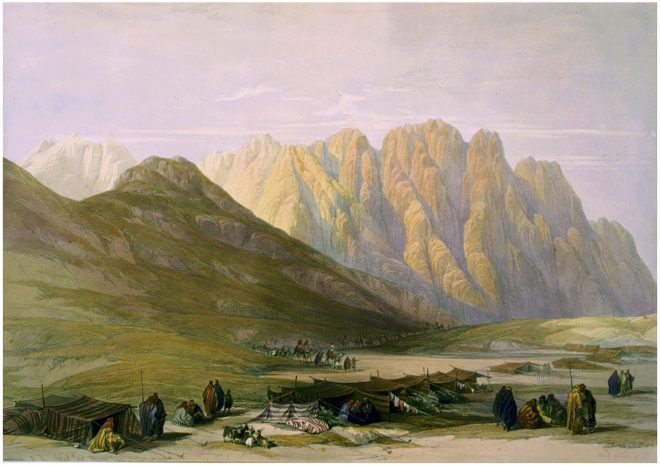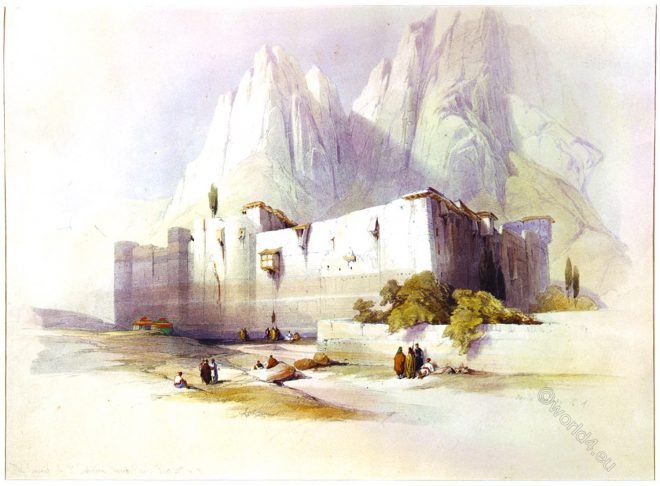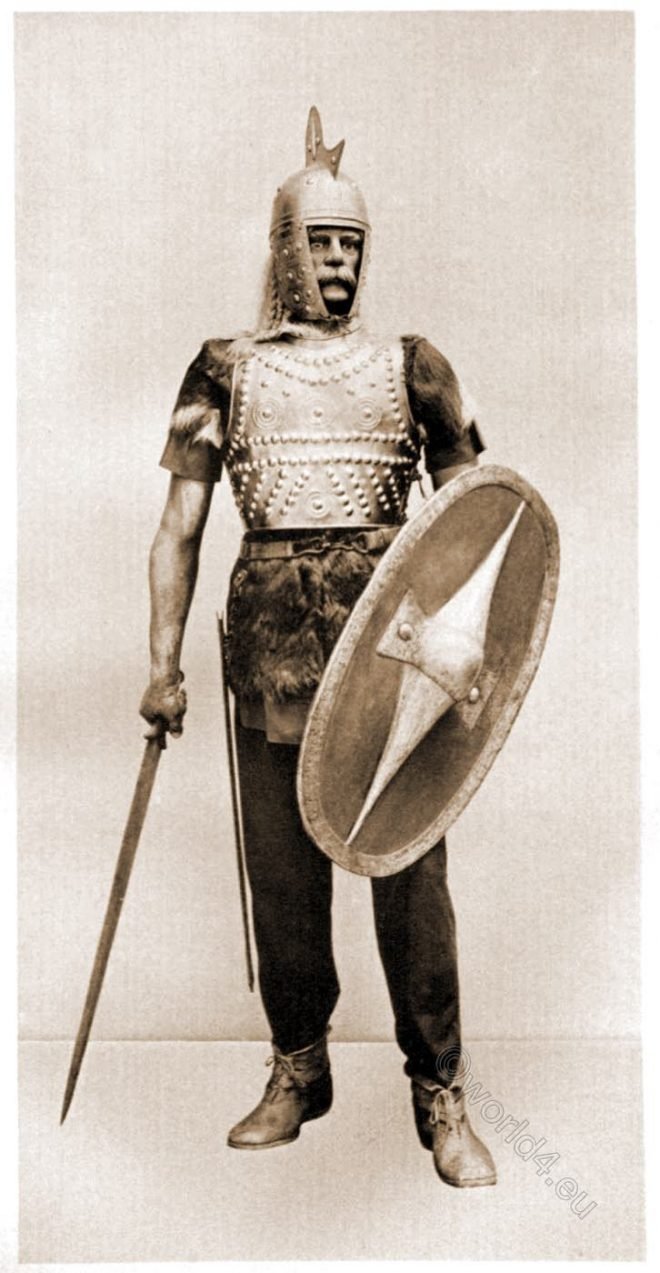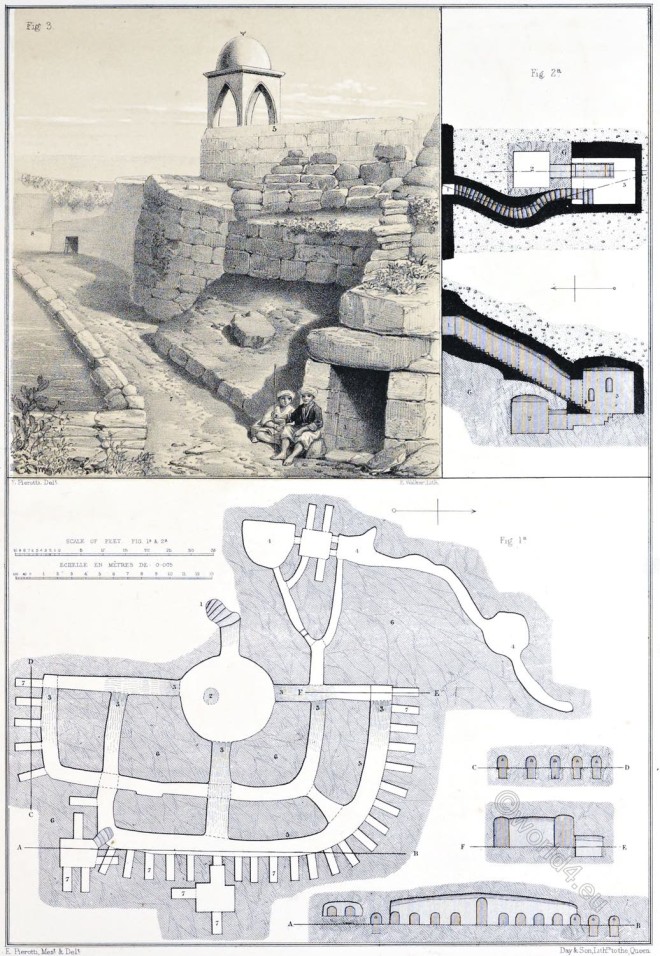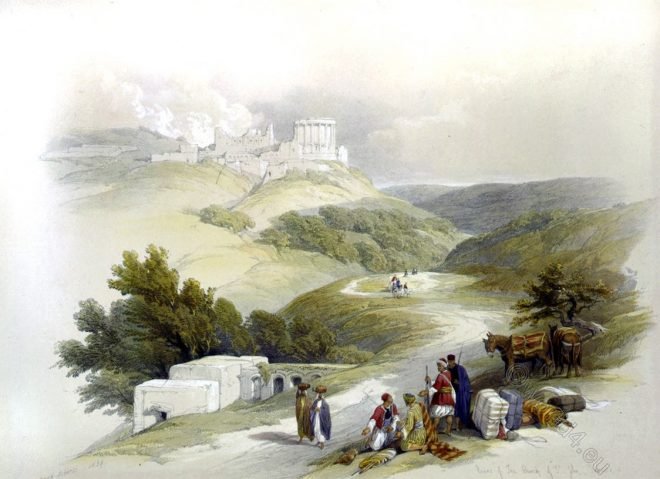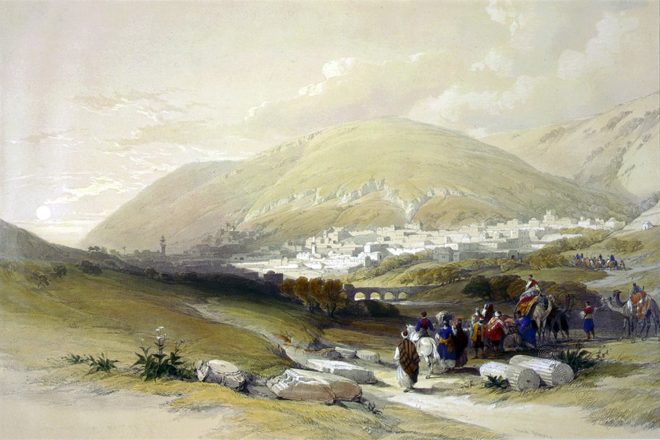The “Rock of Moses” is, from its size, a remarkable object: it rests isolated where it has fallen from the eastern Mountain above
Category: Genre
Encampment of the Aulad-Said, Mount Sinai
This scene represents the arrival of the caravan of the Artist and his companions, in the country, and at the tents of the Aulad-Sa’id.
The convent of St. Catherine at Mount Sinai, Egypt.
This Convent has been built in the form of a square fortress of hewn granite, and flanked with towers, of which one or two have cannon.
Reconstructed Gallic warrior from about 400-200 B.C.
Gallic warrior from about 400-200 before Christ. Reconstructed after antique sculptures and original finds. Gimbel’s weapons collection.
Basilian monks. The foundation of the Order of St. Basil.
Order of Saint Basil the Great. Basilian monks. Armenian Monks. Coptic Monks.
Tomb of the Prophets. Tomb of Lazarus at Bethany.
Plan and sections of the Tomb of the Prophets; View, plan and section of the Tomb of Lazarus at Bethany.
The Royal Château de Blois, Loir-et-Cher.
The Palace of Blois affords an example of successive changes in the buildings, from the original castle to the period of the Renaissance.
Ruins of the Church of St. John Sebaste, ancient Samaria.
The ruins of the Church of Saint John the Baptist in the ancient city of Samaria, not far from the modern city of Nablus.
Nablous, the ancient Shechem, one of the oldest cities in Palestine.
View of one of the oldest and most interesting Canaanite cities in Palestine. Nablous contains some fine fragments of its former grandeur.
Jacob’s Well in Samaria at the foot of Mount Garizim near Nablus.
Jacob’s Well (the Well of the Samaritan Woman) is a well in Samaria at the foot of Mount Garizim near biblical Shechem (now Nablus).


